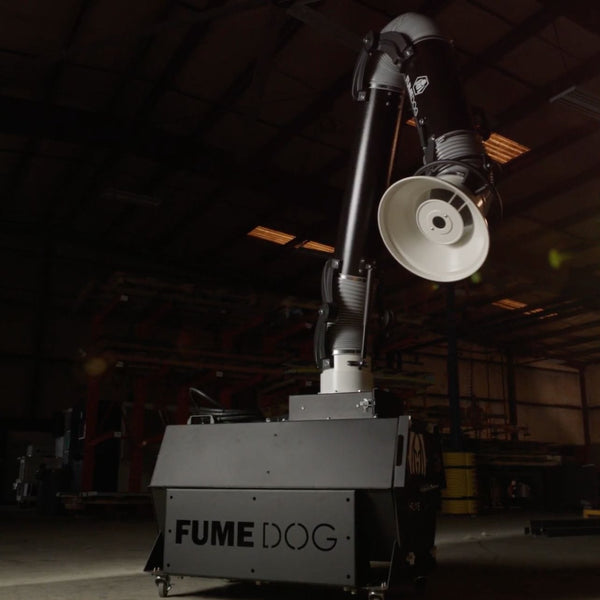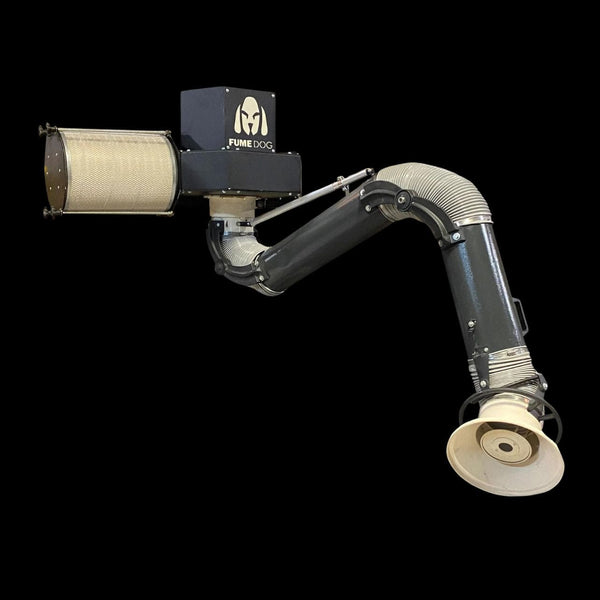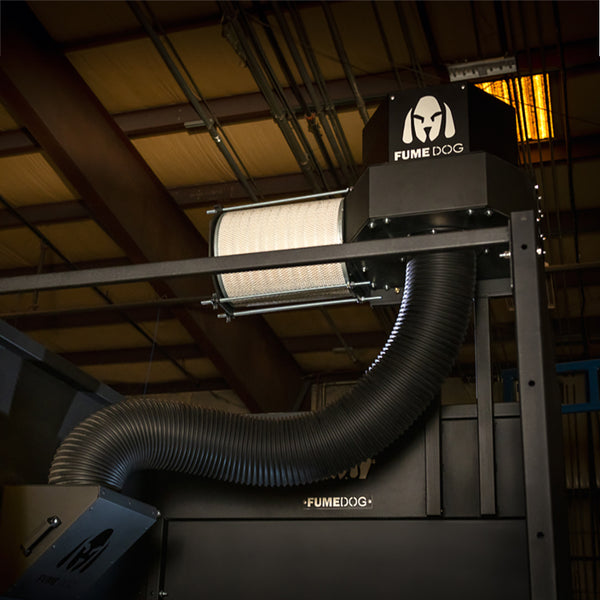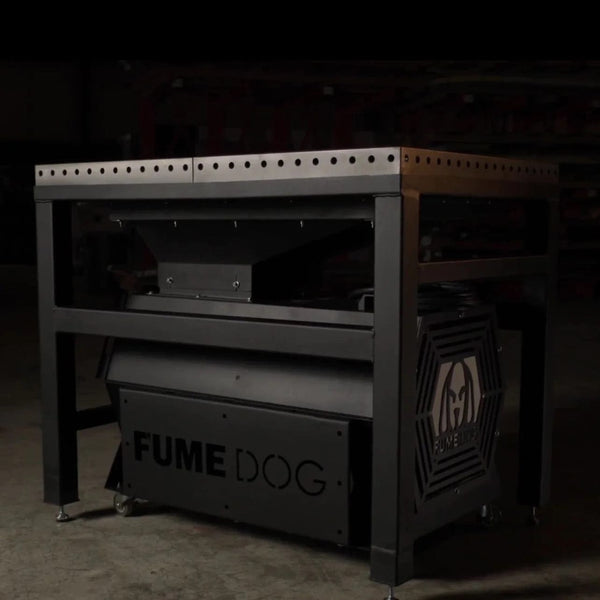
Cutting or welding sheets of metal kicks up a lot of dust and produces fumes, and each of those substances can prove hazardous if employees inhale the particulate matter. Because of the risks involved with plasma cutting, there are specialized tables that mitigate the spread of dust throughout the work area. These tables, downdraft and water tables, provide workers with a safer environment than working on a conventional workshop table.
But these two tables are not exactly equal; they each have their own advantages and challenges. Be aware of the difference between water and downdraft tables—one may prove to be more beneficial to your current working conditions than the other.
What Is a Water Table?
A water table has a slotted top with those slots opening to a tank of water just underneath. The water has several functions; the first one is to capture any particulate matter. Cutting, shaving, and welding all kick up harmful dust that can cause serious respiratory issues for workers who inhale it. When employees perform these welding and cutting processes on top of a water table, the water absorbs the debris.
Performing these cuts without the use of a water table allows the particulate to fly into the air, becoming airborne matter that is much easier to inhale. Utilizing the water prevents dust and other hazardous matter from escaping the immediate work area.
What Is a Downdraft Table?
The design of the downdraft welding table resembles the water table’s, but it replaces the water with a power vacuum to get rid of debris. Downdraft tables still utilize the slotted tabletop, but there is a constant suction that sucks up any particulate matter that workers create during cutting and welding. After collecting the dust, the table transports it to a safe location for proper storage, eliminating the risk of contaminating a workshop with hazardous airborne materials.
What Are the Advantages of the Water Table?
The most immediate advantage of a water table is the lower price and ongoing operational costs. The water that employees need to use in order to protect themselves is cheaper to use than the electricity a downdraft table needs to run.
In addition to lower operating costs, water tables also eliminate the need for a collection container to secure the debris. Instead, the debris floats in the water until workshop employees need to refill it. This cuts down on clutter and increases the amount of floor space available for other stations and machines.
The water also better regulates the heat and prevents distortions in the metal from high temperatures. Cutting and especially welding can superheat the material, contorting it in ways that are not ideal for the finished product. The water acts as a way to stop that process of warping metal by cooling it down before it has a chance to bend out of place.
Lastly, because the water table does not use a vacuum to get rid of dust, it significantly reduces the noise level. Vacuums are loud, especially when they need to suck up dense matter and ensure they collect all of it. The water table is silent and does not contribute to excessive noise in the workshop.
The Disadvantages of a Water Table
The water table is not without its challenges. The first disadvantage workers face is the increased frequency of rust on the slats and other metal parts. The water, by its very nature, corrodes the metal pieces, requiring repair and replacement regularly.
Workshops can mitigate the level of rust across time, but this requires specially treating the water with anti-rusting chemicals. On top of rust, shops must also treat the water to prevent the growth of harmful bacteria.
The water also poses another risk to the quality of the cuts. During the cutting process, splashes of water can interrupt the cut, resulting in rougher edges.
What Are the Advantages of the Downdraft Table?
Suction is a far more reliable way than water to keep the operator out of harm’s way. The vacuum actively secures the dust and captures particles that may escape a water table, leading to safer use. The downdraft table pulls the debris downward, away from the operator; this is the most efficient way to prevent any dust from escaping and contaminating the workshop.
The vacuum also simplifies maintenance, as there is no water to deal with. The straightforward design allows for ease of use and upkeep, enabling a shop to take care of its downdraft table with minimal effort. Water complicates maintenance and tends to deteriorate metal at an accelerated rate; the downdraft table does not have to deal with the inconveniences that water brings.
A shop does need to have a collection drum on hand to store the particulate matter, an addition that can take up space but also provides easy cleanup. Cleaning the drum and disposing of the waste is a simple task due to the collector already securing the debris to begin with. Although the collection unit can clutter a shop, there do exist smaller and more economical storage units, cutting down on the amount of used space.
What Are the Disadvantages of the Downdraft Table?
Aside from the drawbacks previously mentioned, such as space limitations and noise, a downdraft table is generally more expensive than a water table. With the extraction fan, filtration unit, and ductwork necessary to provide optimal functionality, the downdraft table can be expensive as an initial purchase. However, the reduced ongoing costs compared to water tables makes up for the price of installation.
Which Is Ideal for Your Shop?
Whether you decide to go the traditional route with a standard downdraft table or you want something more specialized like the water table, take your whole shop into considerations. Especially with the water table, be aware of how your table will interact with the other machinery you have and the potential safety risks it may pose to your staff members. Know the difference between water and downdraft tables to make the most informed decision and have the best-equipped shop you can have.


